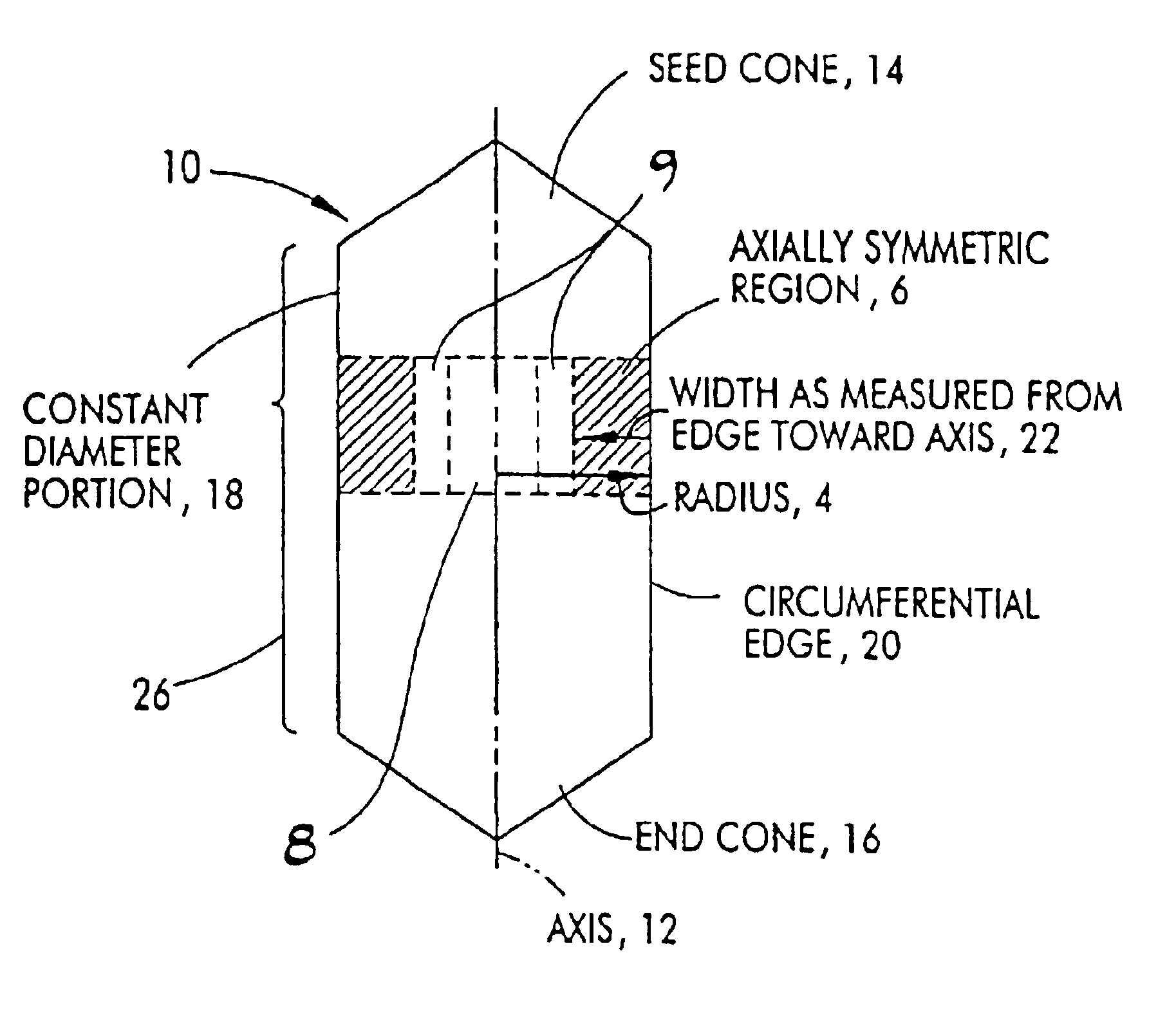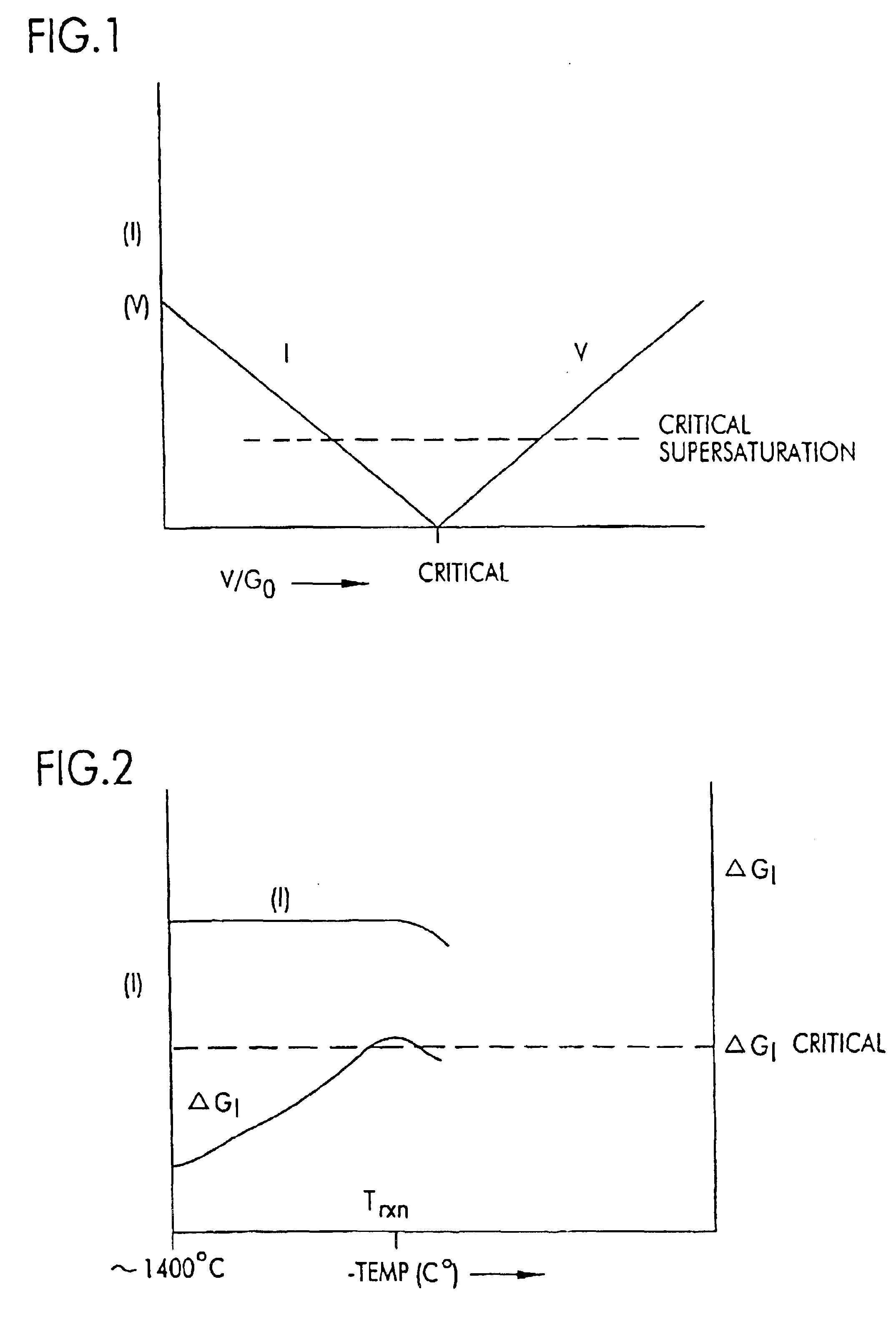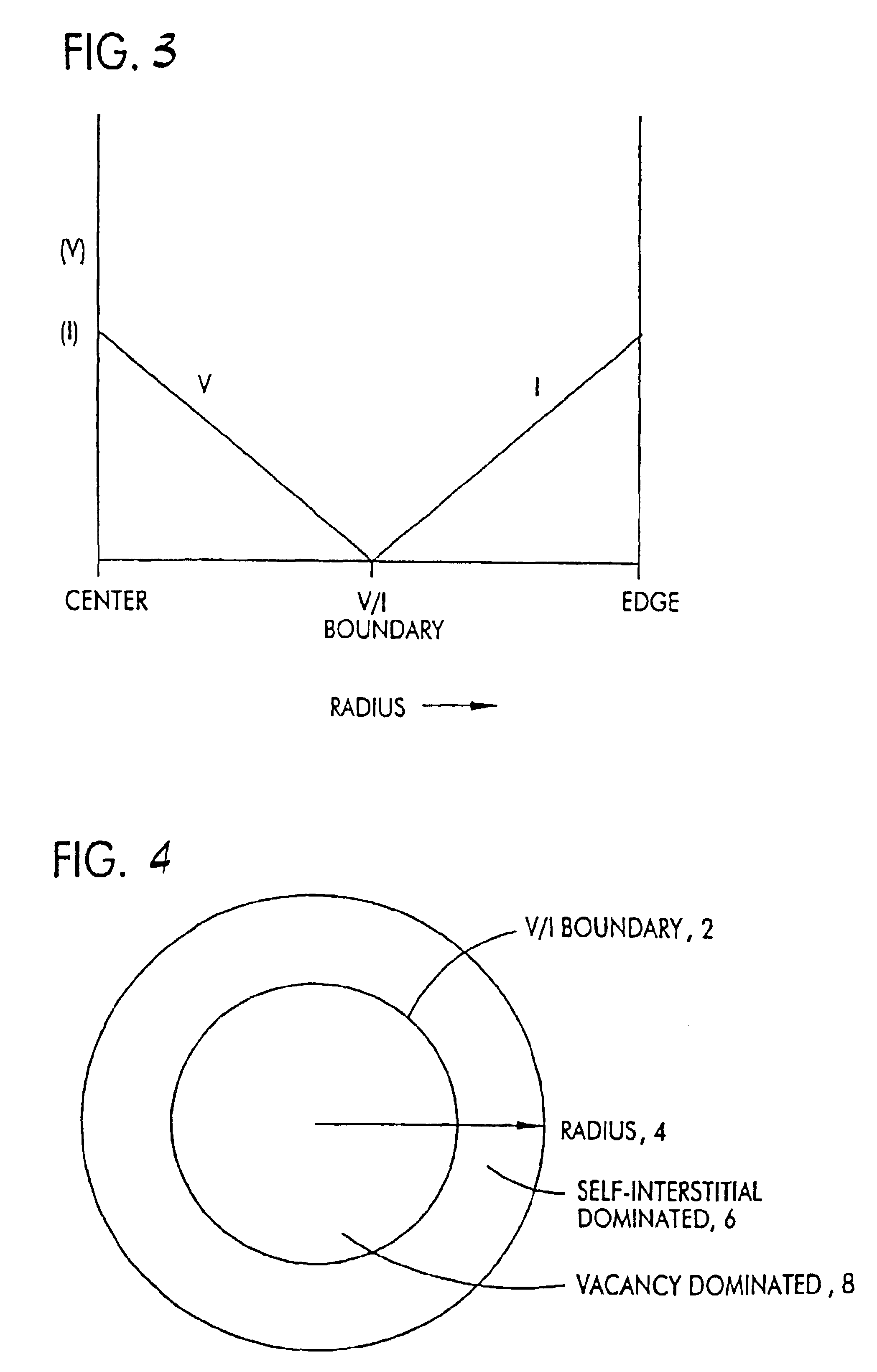Vacancy dominated,defect-free silicon
a defect-free silicon and vacancy-dominated technology, applied in the field of semiconductor grade single crystal silicon preparation, can solve the problems of agglomeration intrinsic point defects of rapid increasing importance, affecting the yield potential of materials, and the number of defects in single crystal silicon in the crystal growth chamber
- Summary
- Abstract
- Description
- Claims
- Application Information
AI Technical Summary
Benefits of technology
Problems solved by technology
Method used
Image
Examples
example 1
Optimization Procedure for a Crystal Puller Having a Pre-existing Hot Zone Design
A first 200 mm single crystal silicon ingot was grown under conditions in which the pull rate was ramped linearly from about 0.75 mm / min. to about 0.35 mm / min. over the length of the crystal. FIG. 7 shows the pull rate as a function of crystal length. Taking into account the pre-established axial temperature profile of a growing 200 mm ingot in the-crystal-puller and the pre-established radial variations in the average axial temperature gradient, G0, i.e., the axial temperature gradient at the melt / solid interface, these pull rates were selected to insure that ingot would be vacancy dominated material from the center to the edge at one end of the ingot and interstitial dominated material from the center to the edge of the other end of the ingot. The grown ingot was sliced longitudinally and analyzed to determine where the formation of agglomerated interstitial defects begins.
FIG. 8 is an image produced ...
example 2
Reduction of Radial Variation in G0(r)
FIGS. 10 and 11 illustrate the improvement in quality that can be achieved by reduction of the radial variation in the axial temperature gradient at the melt / solid interface, G0(r). The initial concentration (about 1 cm from the melt / solid interface) of vacancies and interstitials are calculated for two cases with different G0(r): (1) G0(r)=2.65+5×10−4r2 (K / mm) and (2) G0(r)=2.65+5×10−5r2 (K / mm). For each case the pull rate was adjusted such that the boundary between vacancy-rich silicon and interstitial-rich silicon is at a radius of 3 cm. The pull rate used for case 1 and 2 were 0.4 and 0.35 mm / min, respectively. From FIG. 11 it is clear that the initial concentration of interstitials in the interstitial-rich portion of the crystal is dramatically reduced as the radial variation in the initial axial temperature gradient is reduced. This leads to an improvement in the quality of the material since it becomes easier to avoid the formation of int...
example 3
Increased Out-diffusion Time for Interstitials
FIGS. 12 and 13 illustrate the improvement in quality that can be achieved by increasing the time for out-diffusion of interstitials The concentration of interstitials is calculated for two cases with differing axial temperature profiles in the crystal, dT / dz. The axial temperature gradient at the melt / solid interface is the same for both cases, so that the initial concentration (about 1 cm from the melt / solid interface) of interstitials is the same for both cases. In this example, the pull rate was adjusted such that the entire crystal is interstitial-rich. The pull rate was the same for both cases, 0.32 mm / min. The longer time for interstitial out-diffusion in case 2 results in an overall reduction of the interstitial concentration. This leads to an improvement in the quality of the material since it becomes easier to avoid the formation of interstitial defect clusters due to supersaturation of interstitials.
PUM
| Property | Measurement | Unit |
|---|---|---|
| temperature | aaaaa | aaaaa |
| temperature | aaaaa | aaaaa |
| temperature | aaaaa | aaaaa |
Abstract
Description
Claims
Application Information
 Login to View More
Login to View More - R&D
- Intellectual Property
- Life Sciences
- Materials
- Tech Scout
- Unparalleled Data Quality
- Higher Quality Content
- 60% Fewer Hallucinations
Browse by: Latest US Patents, China's latest patents, Technical Efficacy Thesaurus, Application Domain, Technology Topic, Popular Technical Reports.
© 2025 PatSnap. All rights reserved.Legal|Privacy policy|Modern Slavery Act Transparency Statement|Sitemap|About US| Contact US: help@patsnap.com



